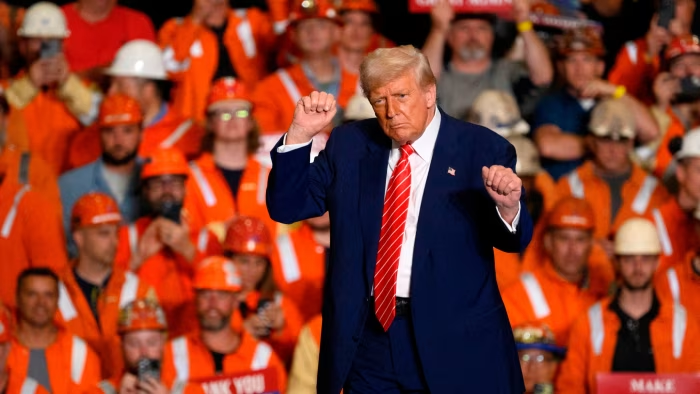U.S. President Donald Trump on Friday vowed to hike tariffs on imported steel and aluminium to 50 % from the current 25 %, framing the move as a shield for domestic producers and a bargaining chip in a wider reset of global trade rules. The announcement came during a campaign-style rally at U.S. Steel’s Irvin Works in West Mifflin, Pennsylvania, where the president stood alongside union workers and executives from both U.S. Steel and Japan’s Nippon Steel, the group seeking to acquire the iconic American company.
A fresh jolt to global trade
The tariff escalation—set to take effect 4 June under a forthcoming presidential proclamation—revives the metal duties first imposed in 2018 and immediately drew condemnation from major trading partners. The European Commission said it “strongly regrets” the decision and is “prepared to take proportionate counter-measures,” signalling a potential return to the tit-for-tat levies that roiled trans-Atlantic commerce earlier in Trump’s first term.
In Brussels, officials warned that a 50 % border tax could hit €6 billion worth of EU steel and aluminium exports, from Spanish rolled sheet to Swedish ball-bearings. Canada and Mexico, which secured exemptions in 2020, are not expected to be spared this time, according to two U.S. trade lawyers briefed on the draft order.
Politics, protection and a $14 billion deal
Trump pitched the tariff hike as necessary insurance for a tentative $14 billion partnership with Nippon Steel that would keep U.S. Steel “American-controlled” while unlocking $2.2 billion for modernising the company’s ageing Mon Valley Works and a further $7 billion for mills in Alabama, Ohio and Arkansas. The Japanese group also pledged to maintain blast-furnace operations for at least a decade and pay workers a $5,000 signing bonus.
The overt linkage of trade policy to a single corporate transaction drew fire from Democrats and free-trade Republicans alike. Senate Finance Chair Ron Wyden called it “industrial policy by tweet,” while Nebraska Republican Ben Sasse said Midwest manufacturers would “pay in higher input costs long after the photo-op is over.”
Market reaction and economic backdrop
Steel futures on the CME jumped more than 6 % to $986 a short ton within minutes of the speech, their biggest one-day move since 2022.
Shares of Caterpillar and Boeing, heavy users of aluminium, fell 2 % and 1.3 %, respectively, as investors weighed cost pressures.
Economists at Oxford Economics estimate a full pass-through of the duty could add 0.1–0.2 percentage points to core inflation over the next 12 months, complicating the Federal Reserve’s path to rate cuts.

What happens next
“If you don’t have a steel mill, you don’t have a country,” he told the crowd.
The White House said the proclamation will cite Section 232 of the 1962 Trade Expansion Act, the same national-security authority used in 2018. Lobbyists for automakers and beverage can makers are already drafting exclusion requests, while the EU is expected to publish a preliminary retaliation list—likely targeting U.S. motorcycles, bourbon and orange juice—within 30 days of the U.S. notice.
Whether voters, allies and markets share that view will become clear long before the first 50 % tariff cheque is due at U.S. ports in early June.
